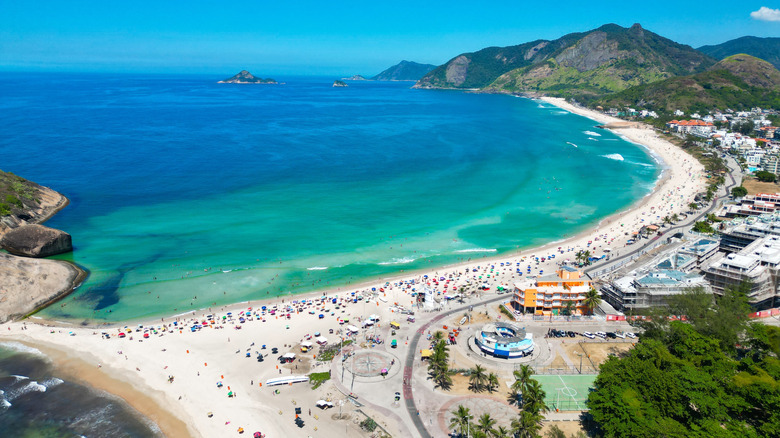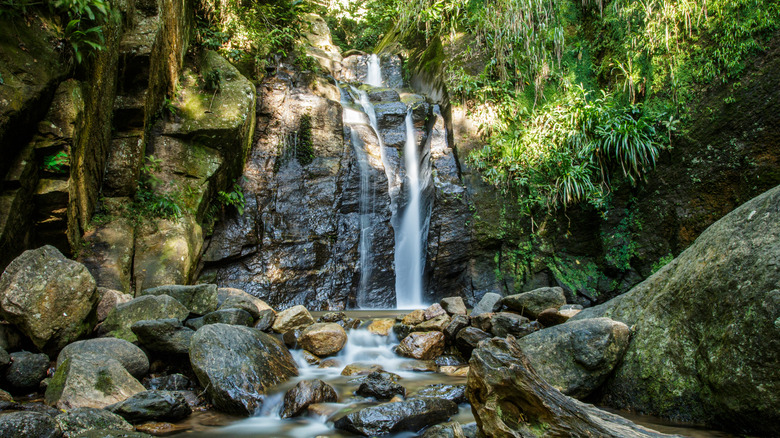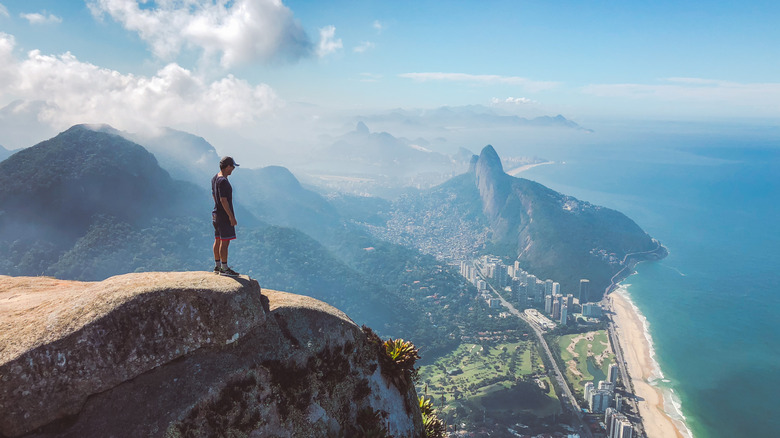The World's Best Hiking Destination Is A Vibrant Coastal City Where Jungle Trails Meet Iconic Beaches
Is it really any surprise that the capital of Brazil – South America's largest country, famed for beaches, rainforest, and city life – is home to the most hikeable city break? According to a recent study by Sports Shoes, Rio de Janeiro scored top marks across the board for its combination of the number of quality hikes, based on actual hikers' reviews. Locked between soaring granite peaks, famous golden beaches, and Tijuca National Park, one of the world's best urban parks, Rio has a lot going for it in terms of scenery. Plus, it has more than 300 logged trails, most of which begin within city neighborhoods before climbing to unforgettable lookouts across the sea and the city.
That's right: There's more to Rio de Janeiro than just Carnival and Christ the Redeemer. It's an incredible terrain full of biodiversity thanks to some of the last remnants of the once sweeping Atlantic Forest blanketing the undeveloped peaks that unfurl within its city borders. And thanks to its proximity to the Atlantic Ocean, its tropical temperatures feel manageable for most of the year. Winters are still warm, with average temperatures between 65 to 75 degrees Fahrenheit, and summer's scorching humidity is tempered by days of rain. Combine all this with a passionate local culture and exciting cuisine, and you've landed yourself a thrilling city-break hiking vacation.
Where to find Rio de Janeiro's best hikes
Tijuca National Park, the world's largest urban rainforest, is easily the highlight of Rio de Janeiro's hiking culture. With its central location near downtown — not to mention the iconic Christ the Redeemer statue looking down from its heights — you can't miss it. The hike to the city's highest peak, Pico da Tijuca, is mind-numbingly steep in places and gains over 2,500 feet of elevation across nearly 8 miles, making for a rather gamely trek. In total, there are 125 miles of trails, ranging from the mobility-accessible to the intense, across Tijuca's 15-square-mile perimeter that's full of waterfalls, caves, endangered tropical plants, and colorful birdlife.
At the park's south end, Pedra da Gávea, or "Crow's Nest Rock," is one of the tallest coastal cliffs in the world. It's up there with the most advanced hikes in Rio, climbing nearly 2,700 feet over 4.5 miles, but its panoramic views over the city, forest, and sea are worth it. Pedra Bonita, just north of Gávea, offers similarly epic views at less than half the price, with less than 1,000 feet of incline over 2 miles — plus it's the launch point for urban hang gliding.
On the "easier" side of things, the walk up Morro Dois Irmãos, or "Two Brothers Hill," takes about 40 minutes from its trailhead in the Vidigal neighborhood, gaining 1,700 feet over a mile. It's particularly well-known for both sunrise and sunset views. The downtown trail up Morro da Urca is another moderate trek near the entrance to Guanabara Bay. It gains over 750 feet across a steep but popular mile-long path that shortcuts the first cable car on the way to the top of the famous Sugarloaf Mountain.
More things to do on your city break in Rio de Janeiro
While one shouldn't overlook the shimmering sands of Copacabana, "The World's Most Famous Beach," and Ipanema, a beach where sunsets are so stunning that viewers clap for them, just know that Rio has plenty more to offer the adventurous traveler. Both these beaches offer incredible surf breaks, but it's Arpoador on Ipanema's east side that's where Brazilian surf culture was born. Additionally, there are calm-water sports like kayaking and stand-up paddleboarding in Guanabara Bay, where you can move at your own pace, likely in awe of its limestone karsts up close.
Before hiking, you'll need fuel. Perhaps Brazil's most famous modern culinary export, açaí bowls are plentiful throughout Rio. You could stop by the Feira de São Cristóvão, an enormous indoor market full of stalls with handicrafts, souvenirs, and snacks, or pick up a variety of sweet and savory pastéis pastries from a street vendor. Then feast after your exertions on a variety of skewered meats and cuts at a churrascaria (a traditional style of Brazilian steakhouse) and a caipirinha, a jungly-tasting cocktail that's the national drink of Brazil. The locals' favorite dish, a black bean and meat stew called feijoada, can be found almost everywhere as well.
There's plenty of active sightseeing around Rio, as well. The Santa Teresa district blends its historic aura with hillside vistas. You can climb the colorful, tiled Selarón Steps and walk along the all-white Carioca Aqueduct in Lapa, a lively neighborhood known for its music, dining, and art galleries. And on your visit to Tijuca Forest, be sure to check out the Museu do Açude — a rich Brazilian businessman once lived in this off-the-radar gem that now houses part of his impressive art collection.


